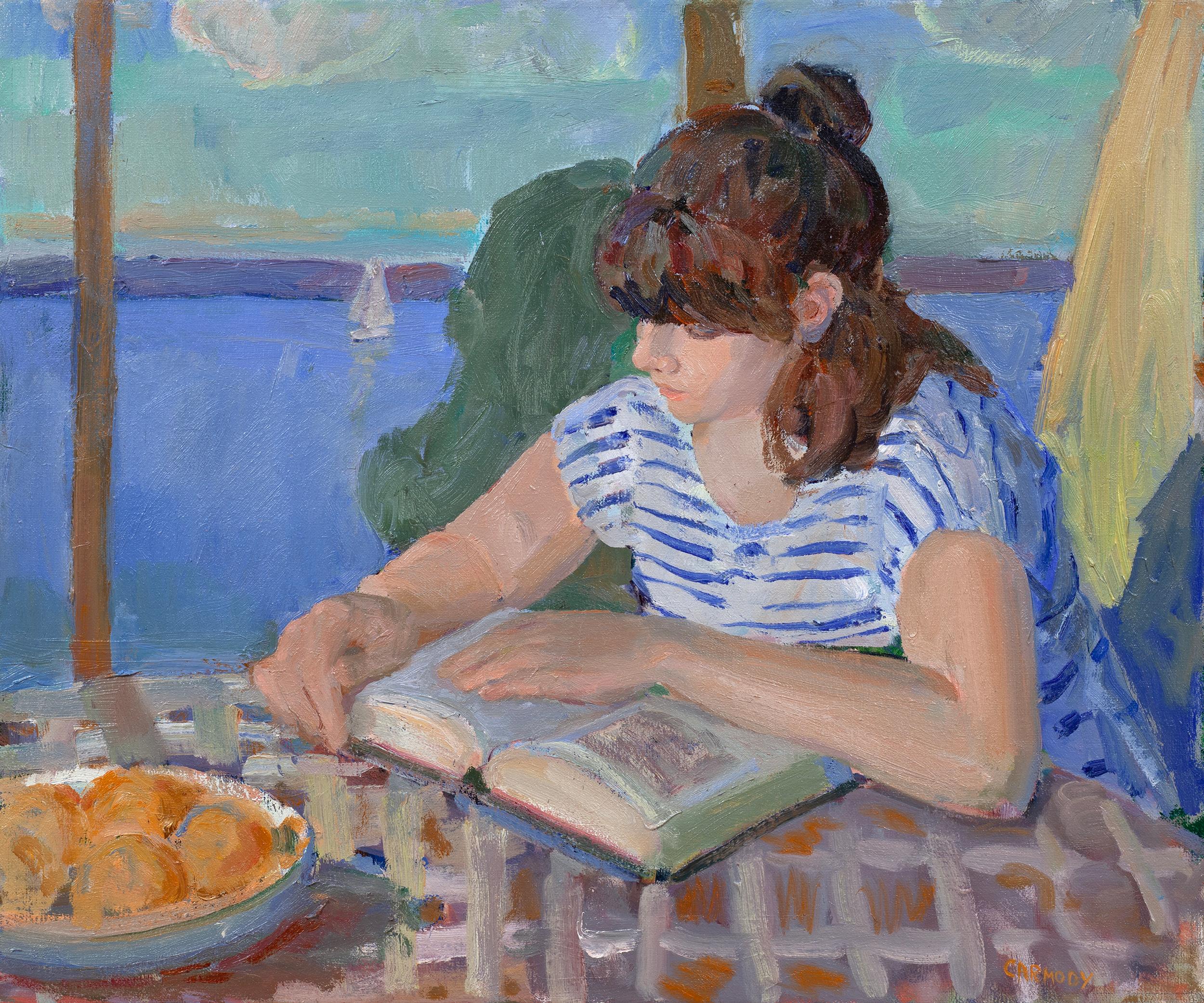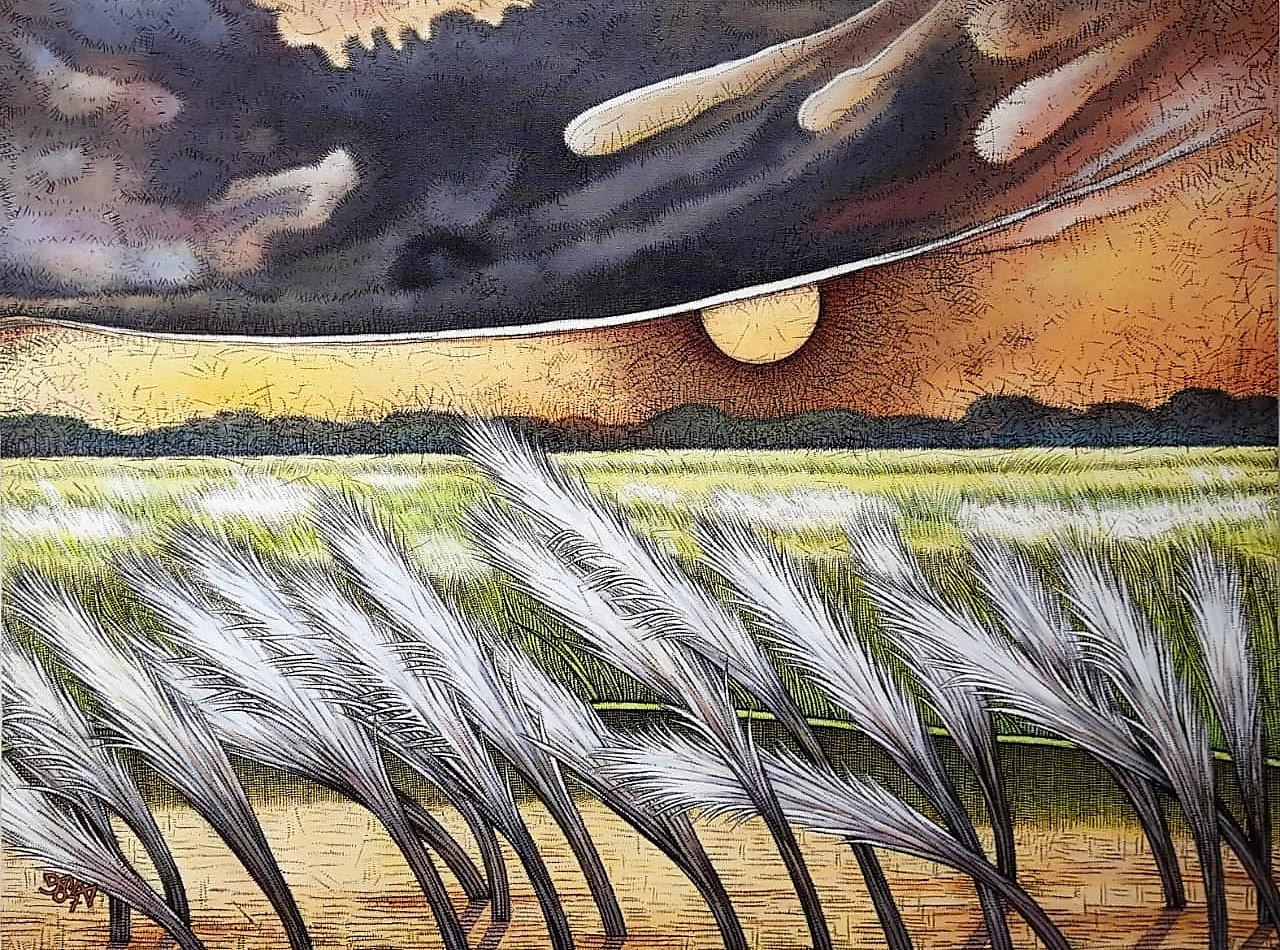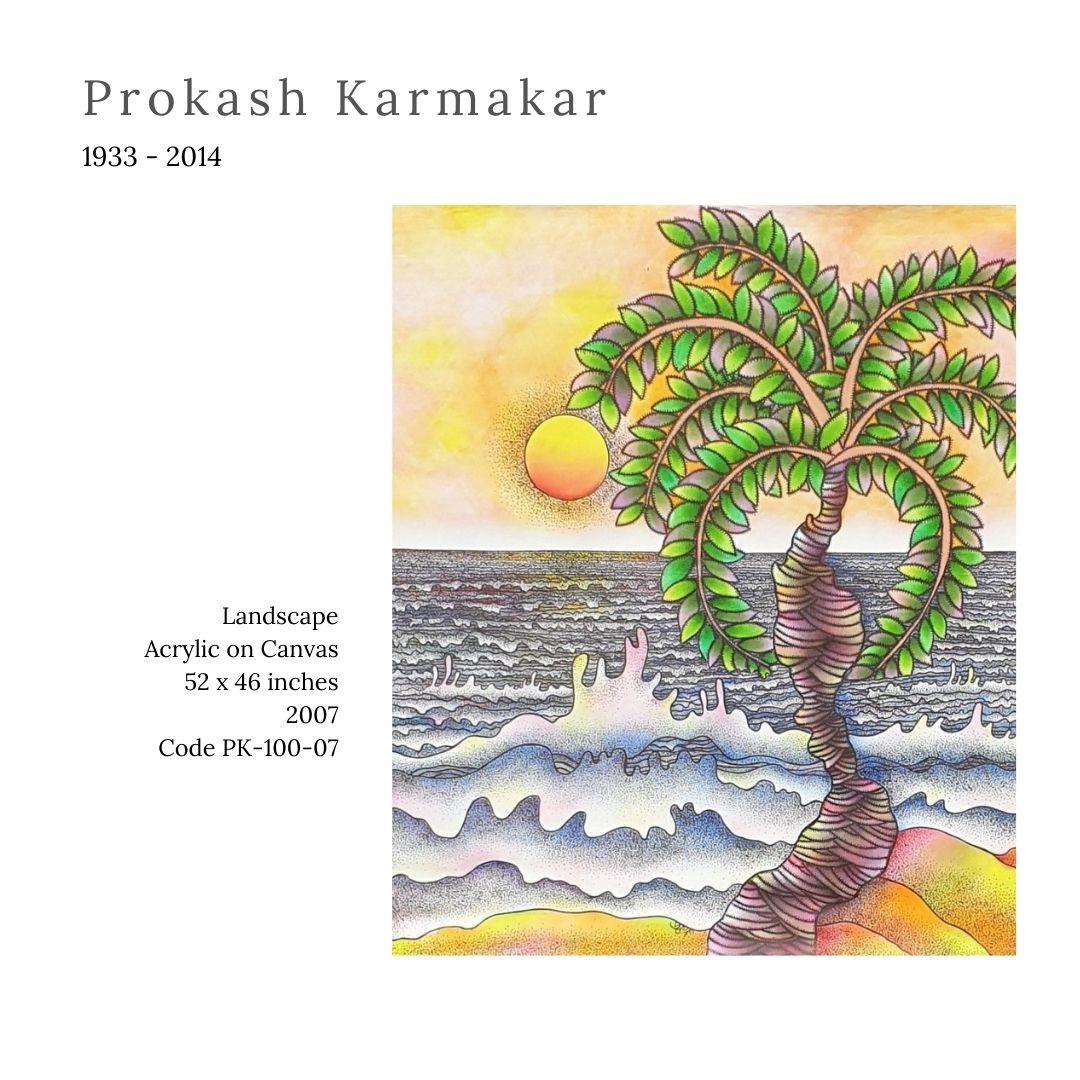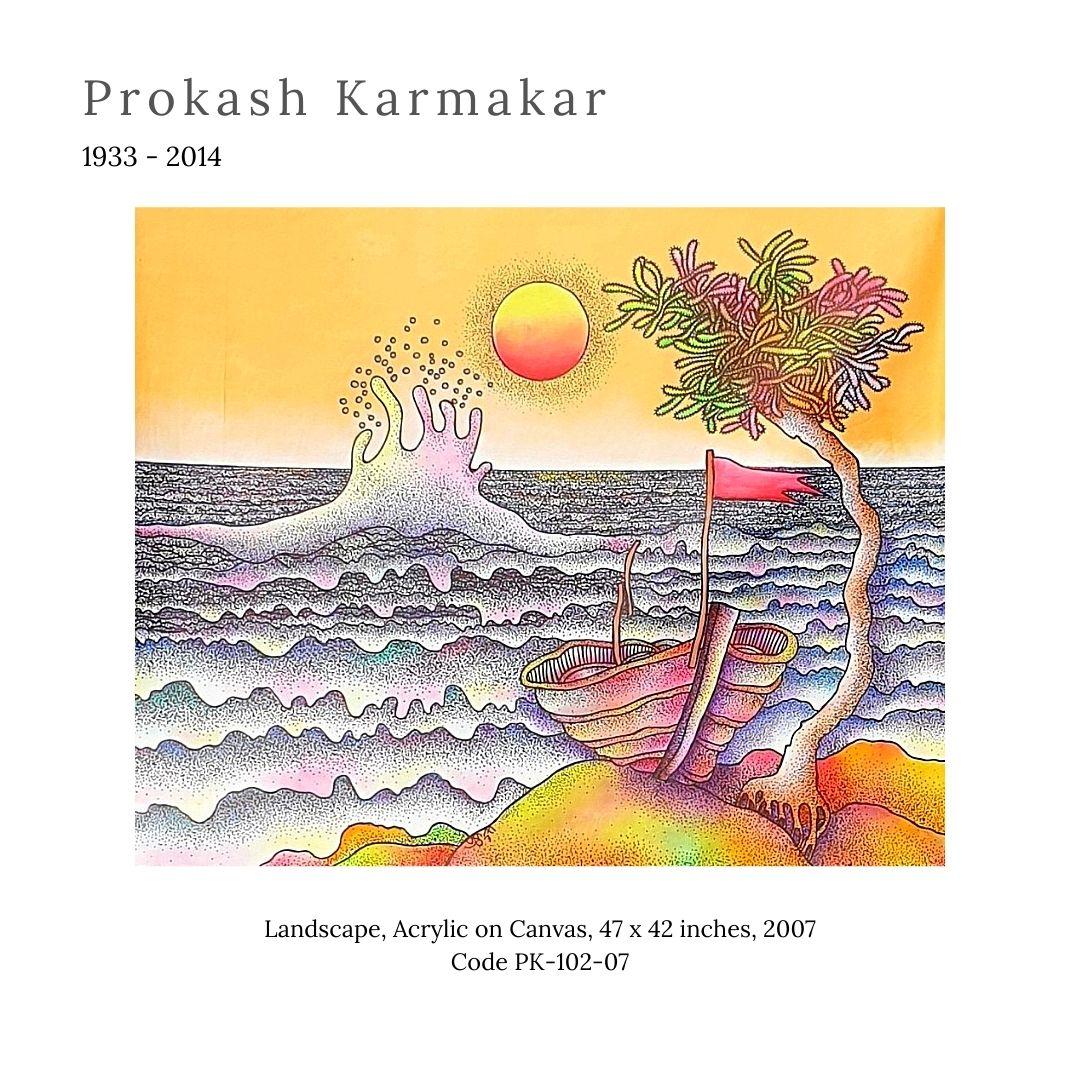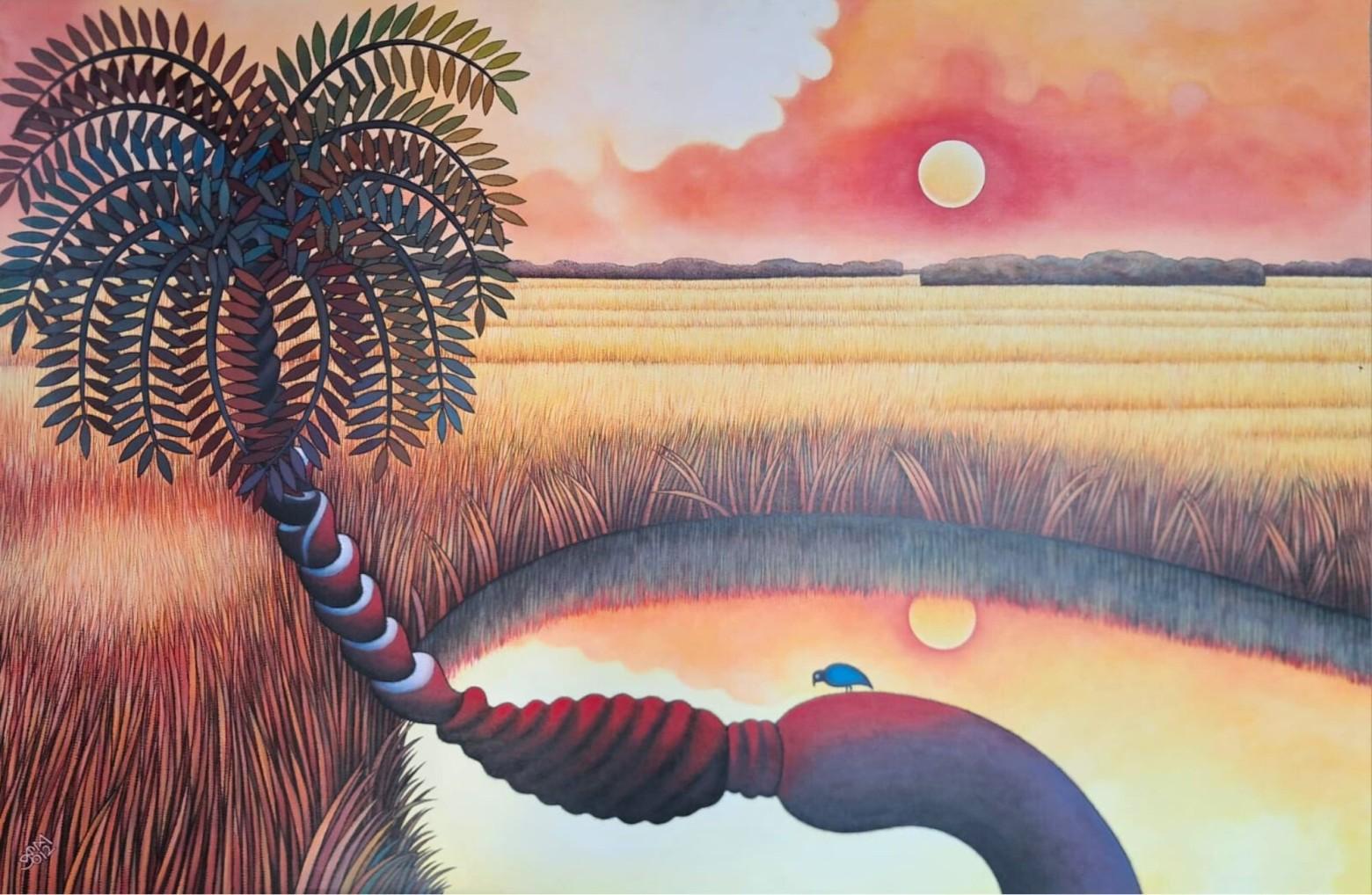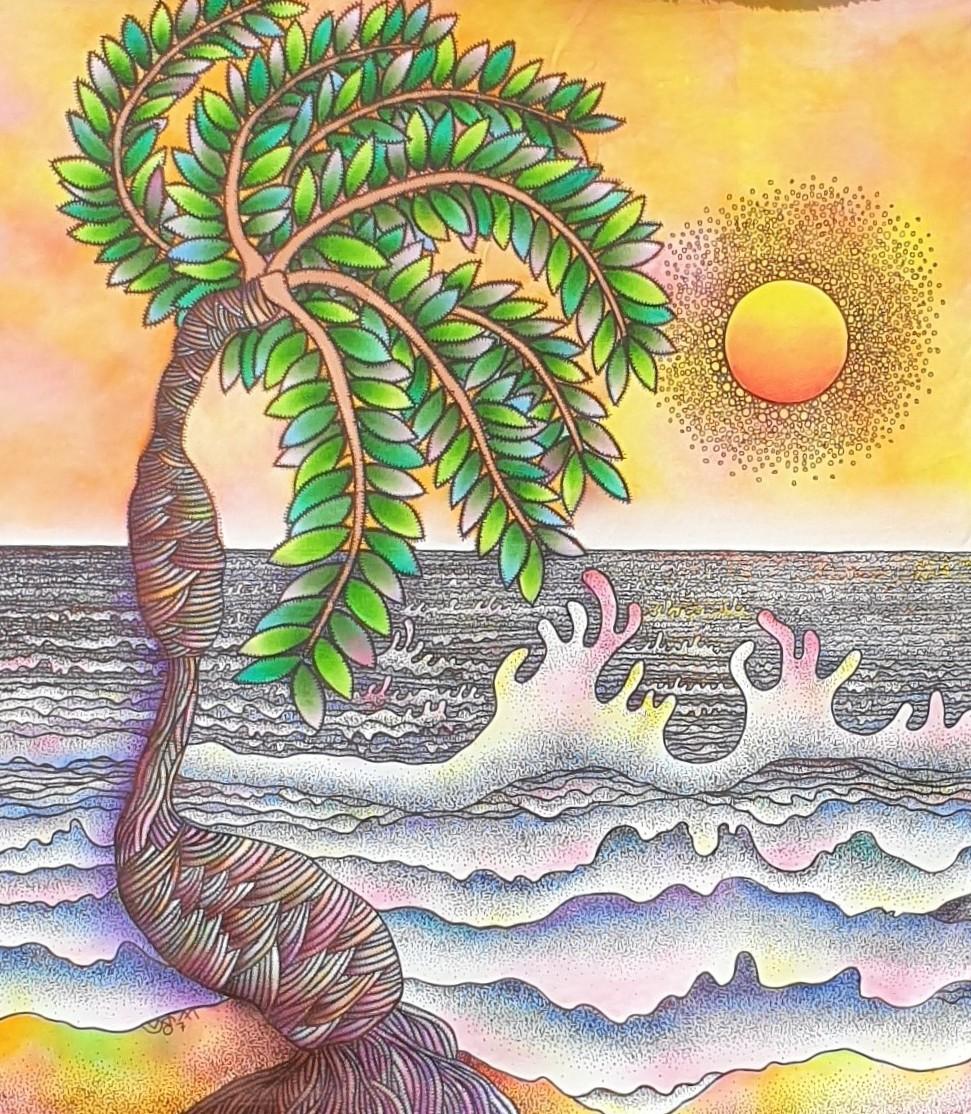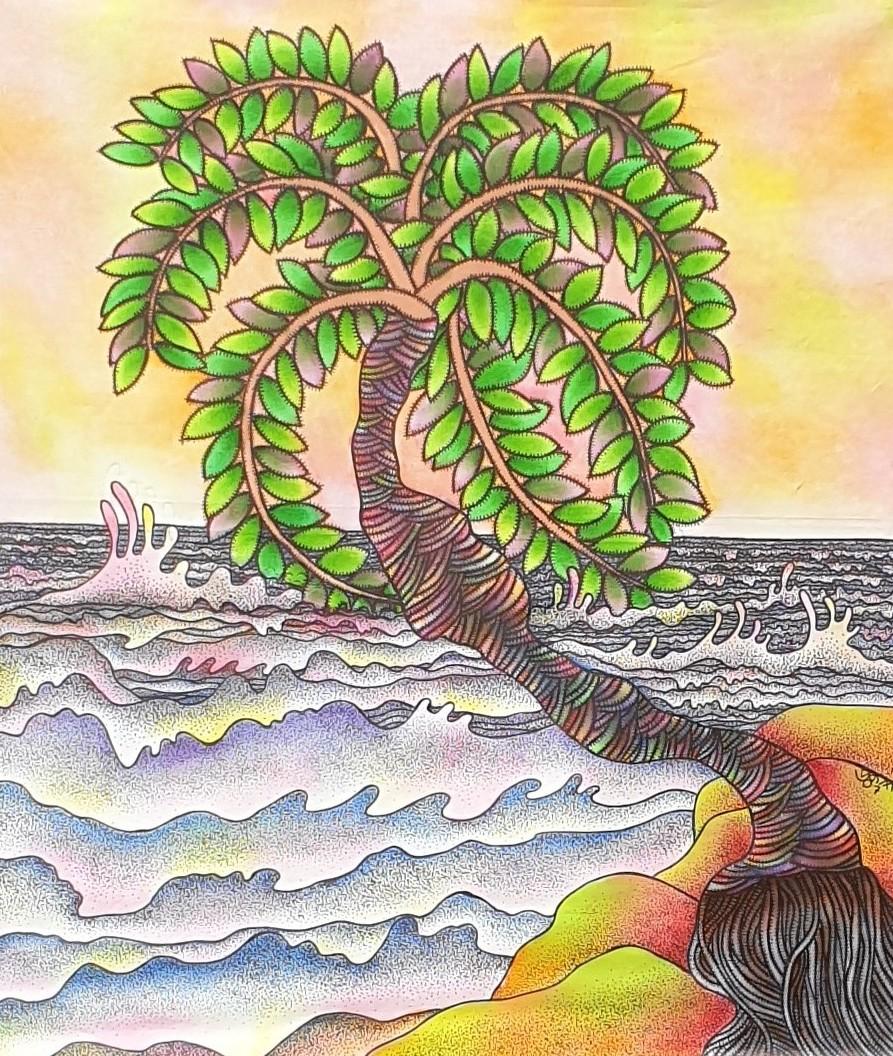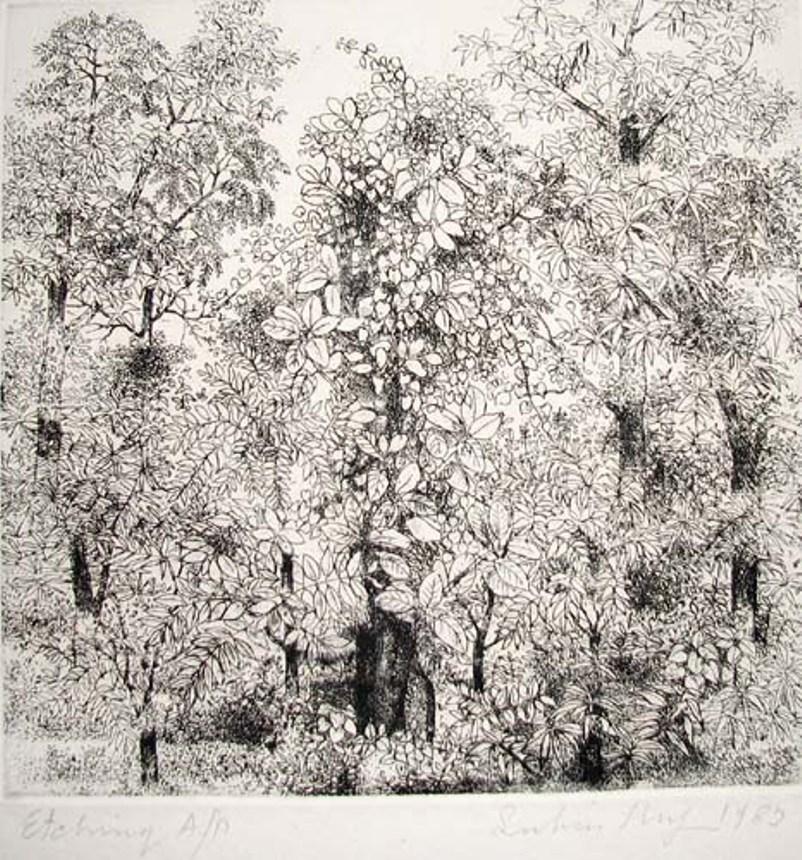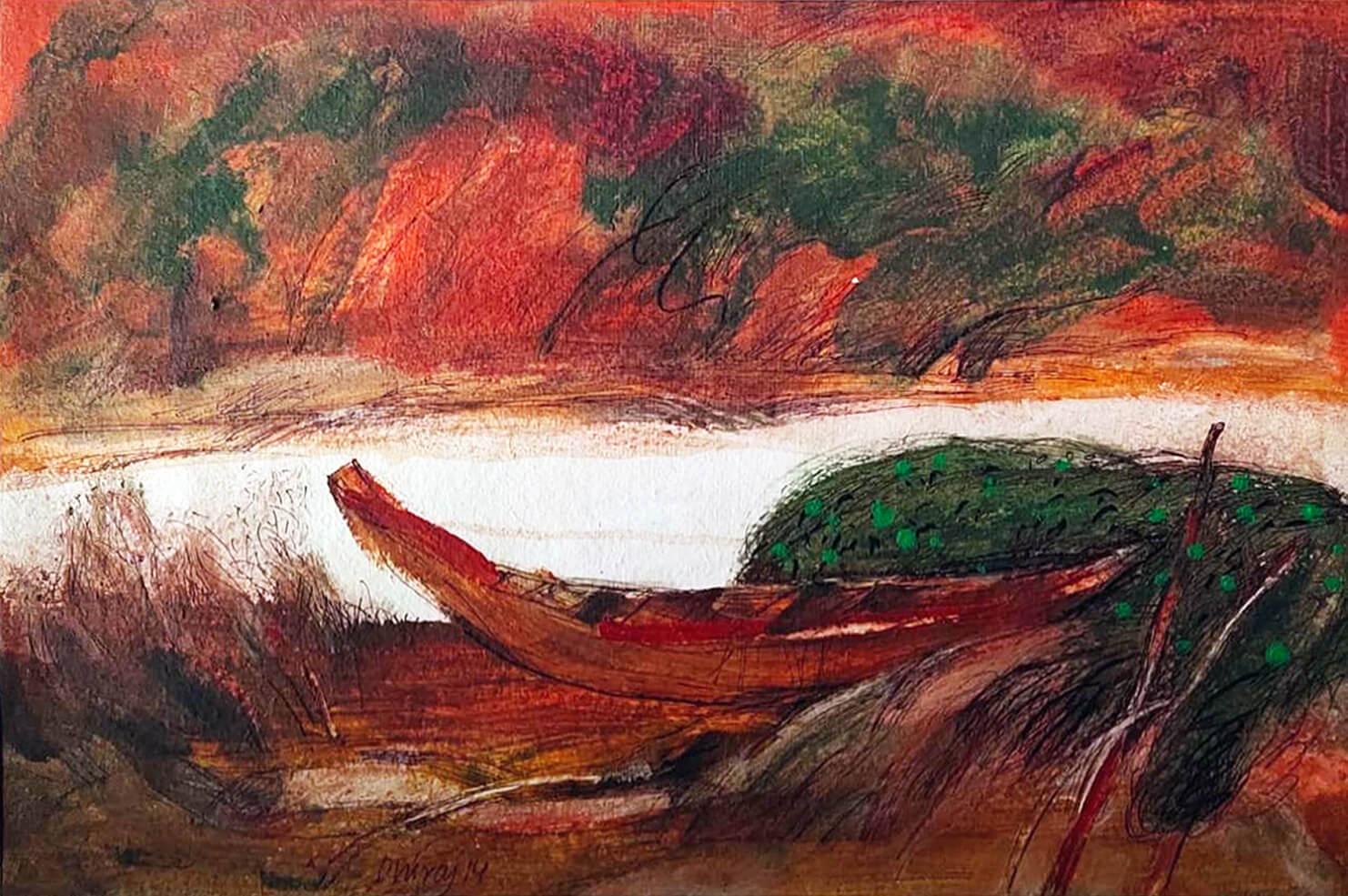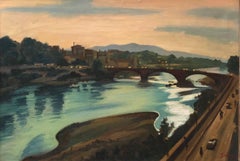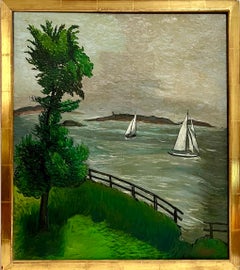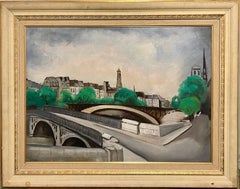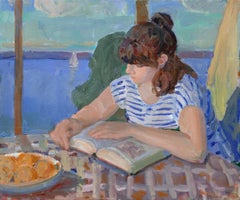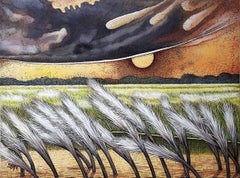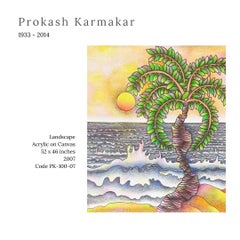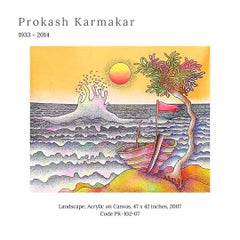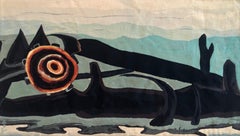
Handmade Wool Tapestry Abstract American Modernist Arthur Dove Aubusson Style
View Similar Items
Want more images or videos?
Request additional images or videos from the seller
1 of 15
(after) Arthur DoveHandmade Wool Tapestry Abstract American Modernist Arthur Dove Aubusson Style
About the Item
- Creator:(after) Arthur Dove (1880 - 1946)
- Dimensions:Height: 35.5 in (90.17 cm)Width: 60 in (152.4 cm)
- Medium:
- Movement & Style:
- Period:
- Condition:
- Gallery Location:Surfside, FL
- Reference Number:1stDibs: LU3828577452
About the Seller
4.9
Platinum Seller
Premium sellers with a 4.7+ rating and 24-hour response times
Established in 1995
1stDibs seller since 2014
1,747 sales on 1stDibs
Typical response time: 2 hours
Authenticity Guarantee
In the unlikely event there’s an issue with an item’s authenticity, contact us within 1 year for a full refund. DetailsMoney-Back Guarantee
If your item is not as described, is damaged in transit, or does not arrive, contact us within 7 days for a full refund. Details24-Hour Cancellation
You have a 24-hour grace period in which to reconsider your purchase, with no questions asked.Vetted Professional Sellers
Our world-class sellers must adhere to strict standards for service and quality, maintaining the integrity of our listings.Price-Match Guarantee
If you find that a seller listed the same item for a lower price elsewhere, we’ll match it.Trusted Global Delivery
Our best-in-class carrier network provides specialized shipping options worldwide, including custom delivery.More From This Seller
View AllHandmade Wool Tapestry Abstract American Modernist Arthur Dove Aubusson Style
Located in Surfside, FL
Original hand made, hand woven wall hanging modern art tapestry.
Manufactura de Tapecarias de Portalegre (Portugal) (TMP Fino) tapestries are woven by hand on vertical looms.
Arth...
Category
20th Century American Modern Landscape Paintings
Materials
Wool
Large Modernist Oil Painting Bridge over the Water Landscape
By Saul Schary
Located in Surfside, FL
Saul Schary was born in 1904 in Newark, New Jersey. Painter, Printmaker, Illustrator. He lived and worked in New York City and New Milford, Connecticut. Schary studied at the Art St...
Category
Mid-20th Century American Modern Landscape Paintings
Materials
Canvas, Oil
1930 Oil Painting Sea Side Sailboats American Modernist WPA Artist Morris Kantor
By Morris Kantor
Located in Surfside, FL
Morris Kantor, American, 1896-1974
Seaside View, 1930
Hand signed M. Kantor and dated 1930 lower right
Oil on canvas
22 1/4 x 19 1/4 inches
24 1/2 x 21 (frame)
Morris Kantor (Belarusian: Морыс Кантор) (1896-1974) was a Russian Empire-born American painter based in the New York City area. This is a beautiful boat scene with a river or lake probably on Long Island.
Born in Minsk on April 15, 1896, Kantor was brought to the United States in 1906 at age 10, in order to join his father who had previously relocated to the states. He made his home in West Nyack, New York for much of his life, and died there in 1974. He produced a prolific and diverse body of work, much of it in the form of paintings, which is distinguished by its stylistic variety over his long career. Perhaps his most widely recognized work is the iconic painting "Baseball At Night", which depicts an early night baseball game played under artificial electric light. Although he is best known for his paintings executed in a realistic manner, over the course of his life he also spent time working in styles such as Cubism and Futurism, (influenced by the Art Deco movement) and produced a number of abstract or non-figural works. A famous cubist, Futurist, painting of his "Orchestra" brought over 500,000$ at Christie's auction house in 2018. Kantor found employment in the Garment District upon his arrival in New York City, and was not able to begin formal art studies until 1916, when he began courses at the now-defunct Independent School of Art. He studied landscape painting with Homer Boss (1882-1956). In 1928, after returning to New York City from a year in Paris, Kantor developed a style in which he combined Realism with Fantasy, often taking the streets of New York as his subject matter. He did some moody Surrealist Nude paintings and fantasy scenes. In the 1940's he turned towards figural studies. Later in his career, Kantor himself was an instructor at the Cooper Union and also at the Art Students League of New York in the 1940s, and taught many pupils who later became famous artists in their own right, such as Knox Martin, Robert Rauschenberg, Sigmund Abeles and Susan Weil...
Category
1930s American Modern Landscape Paintings
Materials
Canvas, Oil
1927 Oil Painting Eiffel Tower Paris American Modernist Wpa Artist Morris Kantor
By Morris Kantor
Located in Surfside, FL
Morris Kantor New York (1896 - 1974)
Paris from the Ile St. Louis, 1927 (view of Eiffel Tower)
Oil painting on canvas
Hand Signed lower left.
Provenance: Hirshhorn Museum and Sculpture Garden, Smithsonian Institution ( bears label verso)
Size: 20 3/4"H x 28 1/8"W (sight), 28.75 "H x 36"W (framed)
Morris Kantor (Belarusian: Морыс Кантор) (1896-1974) was a Russian Empire-born American painter based in the New York City area.
Born in Minsk on April 15, 1896, Kantor was brought to the United States in 1906 at age 10, in order to join his father who had previously relocated to the states. He made his home in West Nyack, New York for much of his life, and died there in 1974. He produced a prolific and diverse body of work, much of it in the form of paintings, which is distinguished by its stylistic variety over his long career. Perhaps his most widely recognized work is the iconic painting "Baseball At Night", which depicts an early night baseball game played under artificial electric light. Although he is best known for his paintings executed in a realistic manner, over the course of his life he also spent time working in styles such as Cubism and Futurism, and produced a number of abstract or non-figural works. A famous cubist, Futurist, painting of his "Orchestra" brought over 500,000$ at Christie's auction house in 2018
Kantor found employment in the Garment District upon his arrival in New York City, and was not able to begin formal art studies until 1916, when he began courses at the now-defunct Independent School of Art. He studied landscape painting with Homer Boss (1882-1956). In 1928, after returning to New York City from a year in Paris, Kantor developed a style in which he combined Realism with Fantasy, often taking the streets of New York as his subject matter. He did some moody Surrealist Nude paintings and fantasy scenes. In the 1940's he turned towards figural studies. Later in his career, Kantor himself was an instructor at the Cooper Union and also at the Art Students League of New York in the 1940s, and taught many pupils who later became famous artists in their own right, such as Knox Martin, Robert Rauschenberg, Sigmund Abeles and Susan Weil...
Category
1920s American Modern Landscape Paintings
Materials
Canvas, Oil
Modernist Abstract Expressionist Watercolor Painting Bauhaus Weimar Pawel Kontny
By Pawel Kontny
Located in Surfside, FL
Abstract watercolor composition bearing the influence of the earlier color-block compositions of Paul Klee.
Pawel August Kontny, (Polish-German-American artist) He was born in Laurahuette, Poland, in 1923, the son of a wealthy pastry shop owner. In 1939 he began studying architecture in Breslau where he was introduced to the European masters and to the work of some of the German Expressionists, soon afterward banned as "degenerate artists" and removed from museums throughout Germany by the Nazi regime. His studies were interrupted by World War II. Drafted into the German army, traveling in many countries as a soldier, he sketched various landscapes but in 1945, he was captured and held as a prisoner of war in Italy. After the war, he studied at the Union of Nuremberg Architects to help design buildings to replace ones destroyed in the war. He recorded his impressions of the local population and the landscapes through his watercolors and drawings. Pawel Kontny thereafter moved to Nuremberg, Germany, becoming a member of the Union of Nuremberg Architects and helping to rebuild the city's historic center. He soon decided to concentrate on his professional art career. He married Irmgard Laurer, a dancer with the Nuremberg Opera. Pavel Kontny 's career as an artist was launched with his participation in an all German exhibition, held at the Dusseldorf Museum in 1952. He held one-man shows in Germany, Switzerland and the United States. During his trip to the United States in 1960, Kontny became instantly enamored with Colorado, and decided to relocate to Cherry Hills with his wife and two children. He quickly established himself in the local art community, being affiliated for a time with Denver Art Galleries and Saks Galleries. His subject matter became the Southwest. During this time he received the Prestigious Gold Medal of the Art Academy of Rome. His extensive travel provided material for the paintings he did using his hallmark marble dust technique. he also worked equally in pastel, watercolor, charcoal and pencil-and-ink. in a style which merged abstraction and realist styles, influenced by Abstract Expressionist painting and South Western American landscapes. In the early 1960s he was one of only a few European-born professional artists in the state, a select group that included Herbert Bayer (1900-1985), a member of the prewar Bauhaus in Weimar and Dessau, Germany, and Roland Detre (1903-2001), a Hungarian modernist painter. As a Denver, Colorado resident, Pavel Kontny exhibited at galleries and museums throughout the United States, Germany and Japan. There, he was inspired by frequent trips to Native American pueblos in the Southwest, as well as by the study of the Plains Indians of Montana and Wyoming. Over the years Kontny had a number of students and generously helped young artist by hosting exhibitions at his Cherry Hills home. For many years he generously donated his paintings to support charitable causes in Denver. Influences during his European years included German pastelist C.O. Muller, German Informel painter Karl Dahmen and Swiss artist, Hans Erni. In the early 1950s his painting style showed the influence of the Die Brücke (The Bridge), a group of German expressionist artists formed in Dresden in 1905 who had a major impact on the evolution of modern art in the twentieth century in Germany. By the middle of the decade his style incorporated more referential abstraction and total abstraction, resulting in part from his study of Hans Hartung, a German artist based in Paris who exhibited his gestural abstract work in Germany. The American moon landing in 1969 inspired Paul Kontny...
Category
20th Century American Modern Landscape Paintings
Materials
Canvas, Oil
Large Modernist Abstract Expressionist Gouache Painting Bauhaus Weimar Artist
By Pawel Kontny
Located in Surfside, FL
Abstract watercolor or gouache composition bearing the influence of the earlier color-block compositions of Paul Klee.
Pawel August Kontny, (Polish-German-American artist) He was born in Laurahuette, Poland, in 1923, the son of a wealthy pastry shop owner. In 1939 he began studying architecture in Breslau where he was introduced to the European masters and to the work of some of the German Expressionists, soon afterward banned as "degenerate artists" and removed from museums throughout Germany by the Nazi regime. His studies were interrupted by World War II. Drafted into the German army, traveling in many countries as a soldier, he sketched various landscapes but in 1945, he was captured and held as a prisoner of war in Italy. After the war, he studied at the Union of Nuremberg Architects to help design buildings to replace ones destroyed in the war. He recorded his impressions of the local population and the landscapes through his watercolors and drawings. Pawel Kontny thereafter moved to Nuremberg, Germany, becoming a member of the Union of Nuremberg Architects and helping to rebuild the city's historic center. He soon decided to concentrate on his professional art career. He married Irmgard Laurer, a dancer with the Nuremberg Opera. Pavel Kontny 's career as an artist was launched with his participation in an all German exhibition, held at the Dusseldorf Museum in 1952. He held one-man shows in Germany, Switzerland and the United States. During his trip to the United States in 1960, Kontny became instantly enamored with Colorado, and decided to relocate to Cherry Hills with his wife and two children. He quickly established himself in the local art community, being affiliated for a time with Denver Art Galleries and Saks Galleries. His subject matter became the Southwest. During this time he received the Prestigious Gold Medal of the Art Academy of Rome. His extensive travel provided material for the paintings he did using his hallmark marble dust technique. he also worked equally in pastel, watercolor, charcoal and pencil-and-ink. in a style which merged abstraction and realist styles, influenced by Abstract Expressionist painting and South Western American landscapes. In the early 1960s he was one of only a few European-born professional artists in the state, a select group that included Herbert Bayer (1900-1985), a member of the prewar Bauhaus in Weimar and Dessau, Germany, and Roland Detre (1903-2001), a Hungarian modernist painter. As a Denver, Colorado resident, Pavel Kontny exhibited at galleries and museums throughout the United States, Germany and Japan. There, he was inspired by frequent trips to Native American pueblos in the Southwest, as well as by the study of the Plains Indians of Montana and Wyoming. Over the years Kontny had a number of students and generously helped young artist by hosting exhibitions at his Cherry Hills home. For many years he generously donated his paintings to support charitable causes in Denver. Influences during his European years included German pastelist C.O. Muller, German Informel painter Karl Dahmen and Swiss artist, Hans Erni. In the early 1950s his painting style showed the influence of the Die Brücke (The Bridge), a group of German expressionist artists formed in Dresden in 1905 who had a major impact on the evolution of modern art in the twentieth century in Germany. By the middle of the decade his style incorporated more referential abstraction and total abstraction, resulting in part from his study of Hans Hartung, a German artist based in Paris who exhibited his gestural abstract work in Germany. The American moon landing in 1969 inspired Paul Kontny...
Category
20th Century American Modern Landscape Paintings
Materials
Watercolor, Archival Paper
You May Also Like
"Summer Read" figurative American contemporary oil painting by Kelly Carmody
By Kelly Carmody
Located in Sag Harbor, NY
"Summer Read" is a figurative American contemporary oil painting by Kelly Carmody of a girl reading a book.
Kelly Carmody’s work has been widely exhibited and collected. One of her ...
Category
21st Century and Contemporary American Modern Landscape Paintings
Materials
Oil, Panel
Landscape, Acrylic on Canvas, Green, Yellow by Modern Indian Artist “In Stock”
By Prokash Karmakar
Located in Kolkata, West Bengal
Prakash Karmakar - Untitled - 36 x 40 inches ( unframed size )
Acrylic on Canvas , 2012
Prakash Karmakar was the most senior artist of Bengal . He was instrumental in the Bengal M...
Category
1990s Modern Landscape Paintings
Materials
Canvas, Pastel
Landscape, Acrylic on Canvas by Modern Artist "In Stock"
By Prokash Karmakar
Located in Kolkata, West Bengal
Prakash Karmakar – Landscape – 46 x 52 inches (unframed size)
Acrylic on Canvas, 2007
Inclusive of shipment in roll form.
Karmakar is best known for his landscapes and n...
Category
Early 2000s Modern Landscape Paintings
Materials
Canvas, Acrylic
Landscape, Acrylic on Canvas by Modern Artist "In Stock"
By Prokash Karmakar
Located in Kolkata, West Bengal
Prakash Karmakar – Landscape – 47 x 42 inches (unframed size)
Acrylic on Canvas
Inclusive of shipment in roll form.
Karmakar is best known for his landscapes and nudes, ...
Category
Early 2000s Modern Landscape Paintings
Materials
Canvas, Acrylic
My Village, Acrylic on Canvas Master Indian Artist Prokash Karmakar"In Stock"
By Prokash Karmakar
Located in Kolkata, West Bengal
Prokash Karmakar
Untitled
Ink and Acrylic on Canvas
60 x 36 inches 91.4 x 122 cm
2005
shipment in roll form Approx 200 Usd
Framed Shipment : 1000-1200 usd
complimentary frami...
Category
Early 2000s Modern Landscape Paintings
Materials
Canvas, Acrylic, Ink
Landscape, Acrylic on Canvas, Yellow, Green Colors by Modern Artist "In Stock"
By Prokash Karmakar
Located in Kolkata, West Bengal
Prakash Karmakar – Landscape – 52 x 46 inches (unframed size)
Acrylic on Canvas, 2007
Inclusive of shipment in roll form.
Karmakar is best known for his landscapes and nudes, which are generally painted in vibrant colors with bold lines and intricate textures. His paintings reflect his perception and interpretation of nature (both orderly and chaotic), life (both rural and urban), and form (from soft to sharp), without reference to religion.
The Master artist drew inspiration from life that was close to him. The fish sellers in the market, the many beaches he visited, the Digha beach in Bengal being most frequented, the sundar bans . Truely an ecelectic artist, son of the very famous artist Prahalad Kormakar. Prokash Karmakar was a very important pillar in the Bengal Art...
Category
Early 2000s Modern Landscape Paintings
Materials
Canvas, Acrylic
Recently Viewed
View AllMore Ways To Browse
Aubusson Rug 1880
Dove Matisse
1910s Tapestry
Vertical Piano
Ivy Rug
Jean Lurcat Aubusson Tapestry
Aubusson Tapestry By Jean Lurcat
Graduated Pitchers
Henri Matisse Rug
Vasarely Tapestry
Calder Tapestry Wall
Rothko Tapestry
Lurcat Rug
Jean Lurcat Rug
Calder Autumn
Tapestry Jerusalem
Tom Wesselmann Prints
Turner Etching

